#asclepias syriaca
Text
*cracks knuckles* Alright everyone strap in.
Hi, I'm Ani, the appointed Milkweed Queen of several Discord group chats, and I'm gonna talk about some of my favorite types of milkweed because its Earth Day, I'm bored, and I had nothing else ready to post. Everyone ready?
I'm not going to give these a formal ranking, I'm just going to ramble about them.
We all know the important reasons to like milkweed--supporting Monarchs, feeding the pollinators, restoring native species to your local habitat and creating an environment for many creatures to live in, that's all fantastic obviously. With that established, this ranking system will have little to do with that. We're talking aesthetics, babey! And any fun facts I happen to toss in are, well, fun facts. If you learn about a new kind of milkweed from this, or want to chime in with your own favorites, by all means let me know!

Swamp milkweed (Asclepias incarnata)! If you've been following my blog for awhile, you likely know I've been on a Grand Quest to find, purchase, and/or grow swamp milkweed for a few years now. Honestly, though, who can blame me! Look at those vibrant pink flowers, contrasting with those bright green leaves! Love at first sight, I'm telling you. I've also heard that it smells like vanilla. Vanilla! It's also, reportedly, one of the few types of milkweed that excels in wet environments, and even though my environment isn't very wet, we stan a queen for that quality.
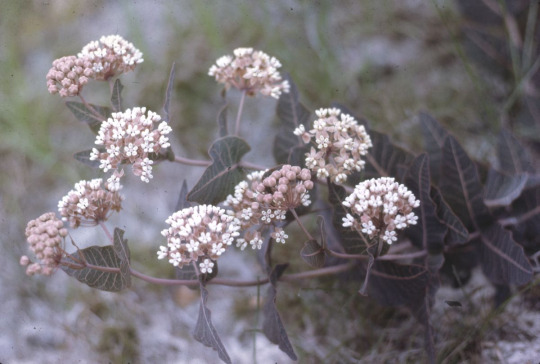
Whether you prefer to call it Sandhill Milkweed or Pinewoods Milkweed, Asclepias humistrata is a champion of sandy soils and also my heart. I hadn't looked too far into this species until late last year, when I was helping another friend look at different milkweeds, but how could I not look into this beautiful plant! With pink stems and veins as early as the seedling stage, pinkish-white flowers and a low-growing spread habit, I would be honored to grow such a specimen in my garden. Their inch-thick, foot-long tap roots help them to quickly spring back to life after a wildfire, providing important food and habitat for creatures returning to the area. How lovely!

Redring milkweed (Asclepias variegata) is another species I hadn't looked too far into until this year, and honestly at great detriment to myself. I'll be honest! I may have ignored this queen at first because I'm not big on white flowers, but those red rings...! Ooh, I want this so bad. The leaves are also fairly big and a lovely dark green, which just makes the white and red pop out more!

Heartleaf milkweed (Asclepias cordifolia) is honestly so iconic, I wish it was native to my region! If you live on the West coast... grow some for me please. How can you not love this specimen! Dusty green heart-shaped leaves directly attached to pink stems, these stunning deep reddish-purple flower clusters...! I continued following one of the most annoying people I'd ever witnessed on Instagram for two months just because I first saw this species in a tiktok of his.

Purple milkweed (Asclepias purparescens) is honestly just. A queen. What else is there to say? Look how purple she is! So purple I almost can't believe it's even real, and yet they are! Not native to my region, far as I know, which is a bummer. I've heard they're hard to grow, but if you can manage it? Share your secrets with the world, honestly, we need more of this plant in our lives.
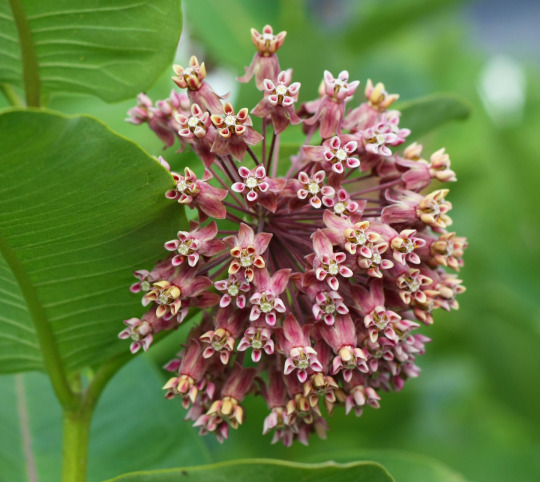
Common milkweed (Asclepias syriaca) is honestly just a classic. I love the light pink of the flowers, and those leaves are huge! I've heard they spread like wildfire, but with clusters of blooms like this? How can you even be too mad about that?
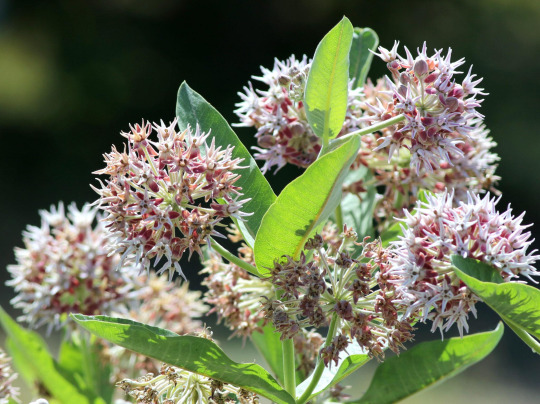
Showy milkweed (Asclepias speciosa). Honestly I'm not going to pretend I was always crazy about this species, but the more I see it pop up on iNaturalist, the more I find myself growing fond of it. These flowers look like crazy fireworks, and honestly, kinda have to stan.
"Oh, Ani, you have so many lovely favorites! Do you have any least favorite--" Tropical milkweed, hands down. I appreciate it's value as more of a 'babys first milkweed' plant but I'm tired of seeing it everywhere, especially knowing it's a bit invasive in my area?
Anyways, these are some of my favorite milkweed species! What are some of yours?
#milkweed#pollinator gardening#asclepias#asclepias humistrata#asclepias incarnata#asclepias syriaca#asclepias variegata#asclepias cordifolia#asclepias purparescens#asclepias speciosa#swamp milkweed#sandhill milkweed#pinewoods milkweed#redring milkweed#red ring milkweed#heartleaf milkweed#heart leaf milkweed#purple milkweed#common milkweed#showy milkweed#gardening#flowers#pink flowers#purple flowers#white flowers#ani rambles#out of queue#pollinator garden
167 notes
·
View notes
Text
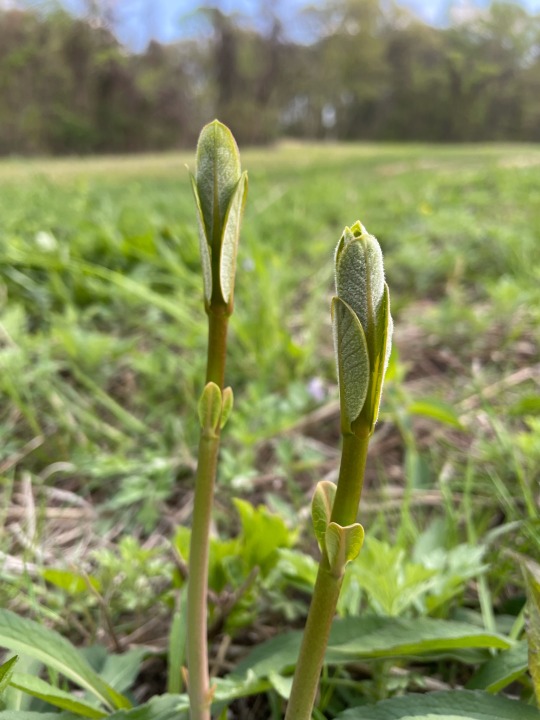
Milkweed shoots.
16 notes
·
View notes
Photo


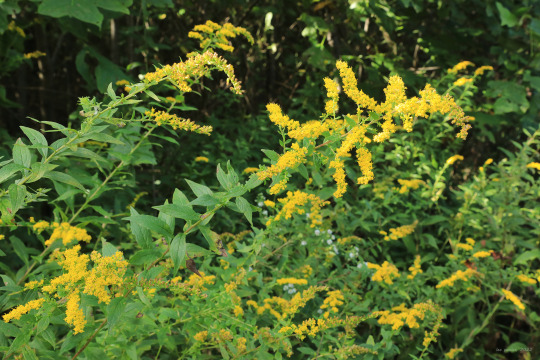
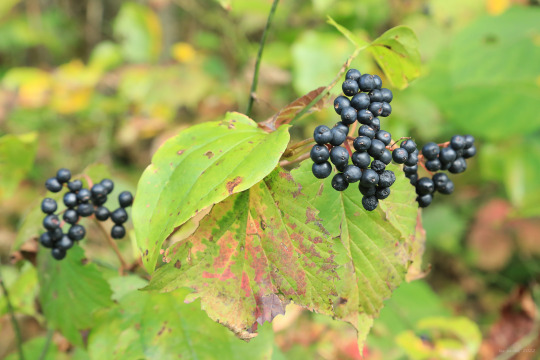
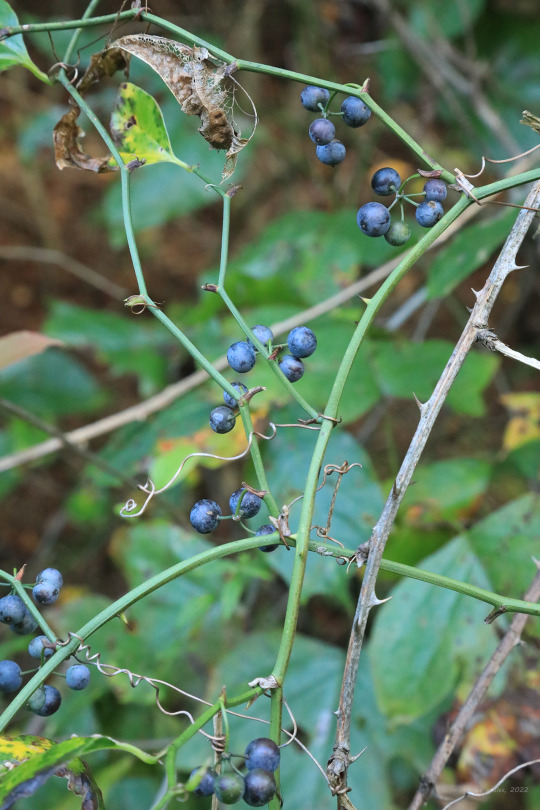


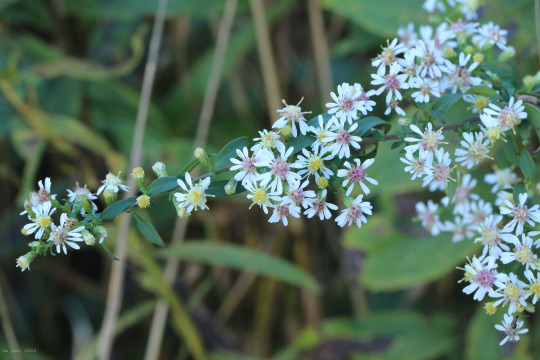

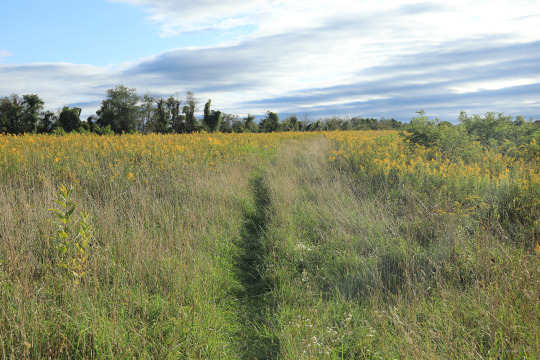
Early fall stroll through an upland meadow at Snake Hill Wildlife Management Area. The Solidago was just divine.
#appalachia#vandalia#west virginia#snake hill wildlife management area#chestnut ridge#solidago#solidago ulmifolia#elm-leaved goldenrod#elmleaf goldenrod#viburnum acerifolium#mapleleaf viburnum#smilax rotundifolia#common greenbrier#symphyotrichum prenanthoides#crooked-stemmed aster#crooked stem aster#zig-zag aster#asclepias syriaca#common milkweed#symphyotrichum lateriflorum#calico aster#symphyotrichum pilosum#frost aster
100 notes
·
View notes
Photo

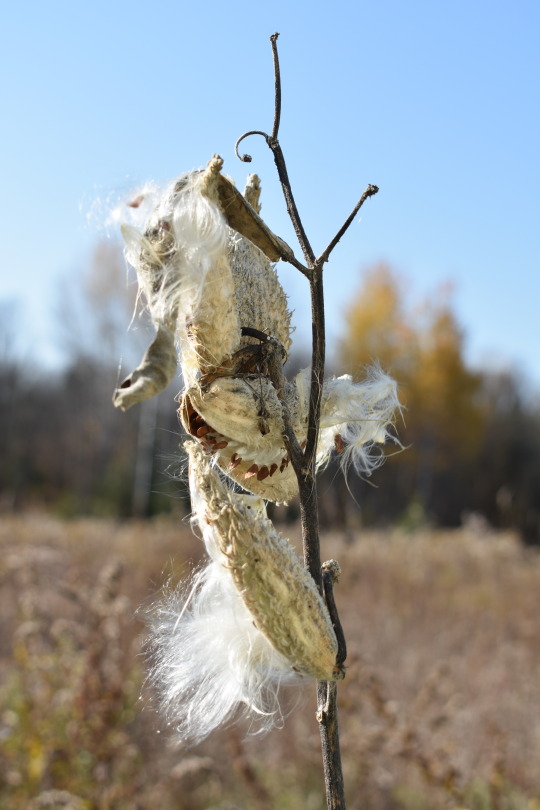
Common Milkweed
Asclepias syriaca
Apocynaceae
Photographs taken on October 22, 2022, at Marmora and Lake, Ontario, Canada.
#wildflowers of southern ontario#Common Milkweed#milkweed#Asclepias syriaca#seed pod#Apocynaceae#Asclepias#Marmora and Lake#Ontario#Canada#Marmora
17 notes
·
View notes
Photo
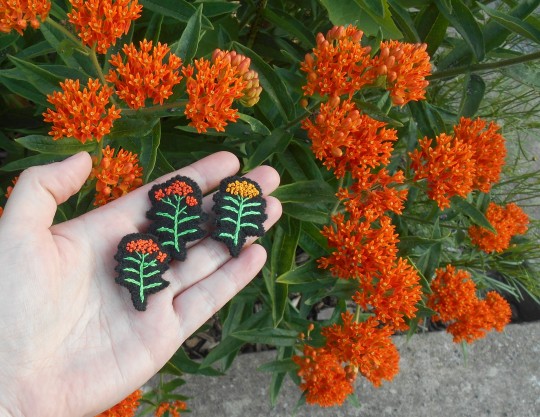
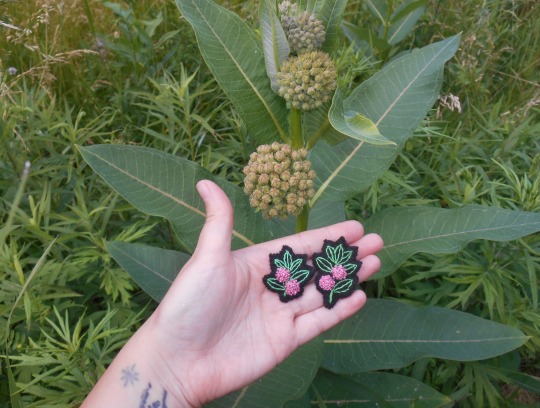


Milkweed season! June milkweed pins for your Summer Solstice look book. 2022.
Butterfly milkweed/Asclepias tuberosa (orange)
Common milkweed/Asclepias syriaca (pink)
62 notes
·
View notes
Photo
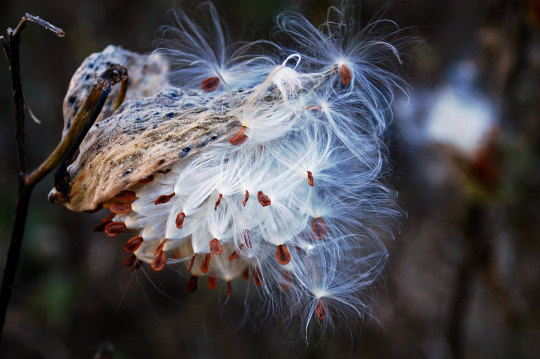
Common Milkweed by Karin Lewis on Flickr.
This work is licensed under CC BY-NC 2.0.
#common milkweed#milkweed#asclepias#asclepias syriaca#brown#fruit#landscape#wild#wildflowers#botany#creativecommonsplants#creative commons#plants#plant blog#plant photography#flickr
6 notes
·
View notes
Text
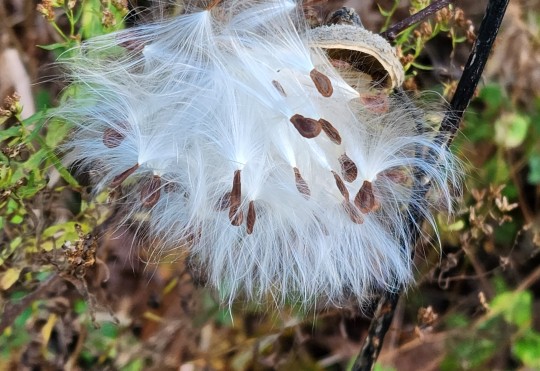
Nov 6, 2022 - at the edge of the swamp - on yesterday's afternoon dog walk
#common milkweed#asclepias syriaca#seed dispersal#nature#november#island#martha's vineyard#massachusetts#new england
6 notes
·
View notes
Text
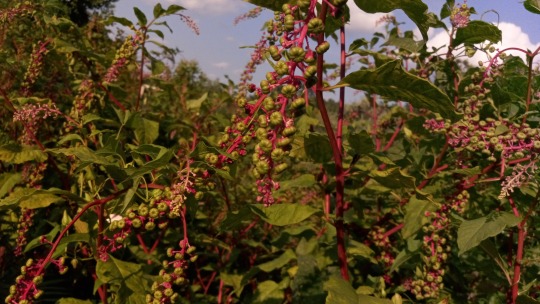


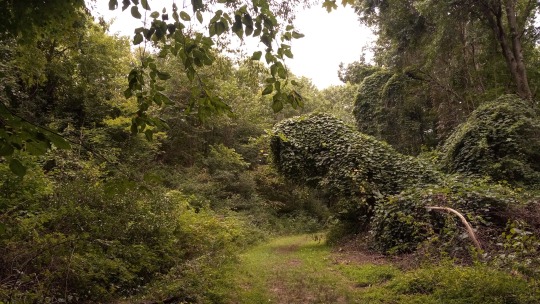
2023
#photography#photo#pokeberry#milkweed#queen anne's lace#phytolacca americana#asclepias syriaca#daucus carota#original#personal#own
0 notes
Text
Plant update: milkweed is going strong, plus what I think is a liatris seed that escaped into the wrong pot. You can see a teeny echinacea sprout in the background
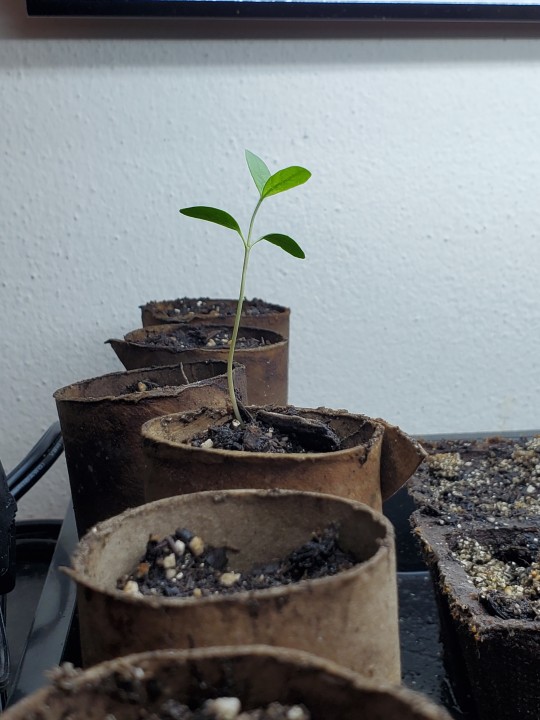

0 notes
Photo
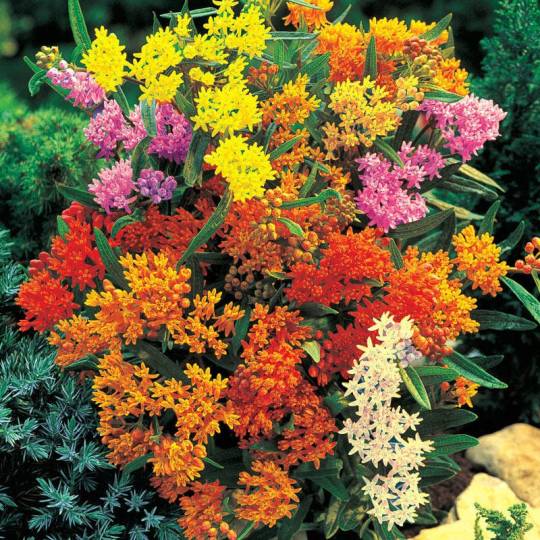
Milkweed Help Save The Monarch Butterfly! (Asclepias Syriaca) Mix Seeds, Organic, Open Pollinated HEIRLOOM non GMO, BN50 One of the easiest butterfly-friendly flowers you can grow! Brighten your landscape, borders, and bouquets with large clusters of orange, red, pink, and lemon-yellow blooms engulfed in oblong, mid-green leaves. Butterflies all summer long! Enjoy the bright orange and lemon hues of this vibrant mixture while flocks of butterflies treat you to their own show of color and activity. Fragrant, quick-growing plants form clumps of foliage that make the perfect backdrop to the showy flowers. Milkweed plants are drought tolerant and provide a steady food source for beautiful Monarch butterflies Please join in the fight to raise back up the declining numbers of Monarch butterflies by planting milkweed in your area. Milkweed is essential to the Monarchs as they complete their life cycle on the plant. The monarchs will fly all the way from Mexico to reproduce on it. They begin by laying eggs on the leaves and once they hatch, use the leaves of the plant as their food source. Once large enough, the process of metamorphosis begins and the caterpillar emerges as the Monarch butterfly. The butterfly feeds off the Milkweed flowers until it lays eggs for the next generation. Milkweed is essential to their short life cycle and by planting it in your landscape, you are creating a habitat for the butterflies for years to come. Once established it will continue to come up in the same spot each year. I include complete instructions for germinating the seeds with each order. If we all work together we can insure that future generations get to enjoy the beauty of the wonderful Monarch butterfly!!! Species: Variety of Milkweed. We do NOT make any claims that you will receive all seed varieties since we have no way of knowing which are which. The mix may include; Soulmate Swamp Milkweed, Swamp Milkweed Carmine, Orange Glory Flower, Cinderella Asclepias, Summer Zest Asclepias, Bloodflower, Sunset flower, Whorled Milkweed, Common Milkweed, Showy Milkweed, Tropical Milkweed, and Butterfly Weed Heirloom pollinator attractor Multiple colors of blooms beginning in the summer that can thrive in almost any soil Thrives in bright, sunny growing areas Botanical Name Asclepias tuberosa Form Perennial Hardiness Zone 3-9 Flowering Time All summer Light Requirements Full Sun Flower Color Mixture of yellow, orange, and pink tones Flower Form Clusters (umbels), 2-5" across Foliage Type Alternate, lanceolate or oblong, 2-6" long Growth Rate Fast Height/Habit 18 - 36 inches Spread 24 inches Planting Instructions Top of the plant should be just below the soil, plant approx 24" apart. Soil Requirements Well drained Will Tolerate Acidic Soil, Clay Soil, Dry Soil, Loamy Soil, Sandy Soil Pruning Remove spent blooms can prolong blooming time. LIGHT Full Sun SIZE #1 Plant ZONE 3-9 BLOOM TIME All summer HEIGHT 18 - 36 inches SOIL REQUIREMENT Well drained DEER RESISTANT ATTRACT BEES How to Germinate Milkweeds MILKWEEDS (ASCLEPIAS SPP.) ARE NOTORIOUSLY DIFFICULT TO GERMINATE. But don’t despair. Follow this process and you’ll soon be on your way to supporting monarchs, bumblebees and tons of other insects that depend on milkweed plants. 1. Collect Materials Here are the materials you’ll need to get started: Milkweed seeds native to your specific ecoregion A plastic bag with a seal or zip closure A bulb growing tray or another large shallow container with drainage holes Numerous 4-inch pots Stratification mix (one part perlite to one part vermiculite) Seed germinating mix (can be found at garden centers or nurseries) Well-draining growing mix. Wildflower Center experts have successfully used several different growing mixes: One part coarse sand to one part compost, or One part coconut coir to one part coarse sand to one part compost, or Composted pine bark (can add coarse sand) 2. Soak and Stratify Seeds Milkweed seeds require some time in the damp cool. Soak milkweed seeds in water for several hours or overnight; tap water is okay. After the seeds have soaked, put them in a sealed plastic bag filled with moist stratification mix (and by “moist” we mean like a damp sponge, no excess water). Refrigerate the bag of moist seeds in their mix for at least two weeks. For some species of Asclepias, 30 days of cool moist stratification yields 85 percent germination or better. Check your seeds every day or so; some seeds such as A. incarnata and A. tuberosa may begin to germinate in the bag. 3. Germinate Once cold stratified, your milkweed seeds are ready to germinate. Transfer the moist seeds and stratification mix into a bulb tray of damp but not soggy germinating mix. Cover lightly with germinating mix. Mist to moisten soil surface thoroughly and check daily. As seeds germinate, mist occasionally. If they are kept in a germinating mix that is too moist, the seedlings will “damp off,” which means they’ll die. Good air movement seems to reduce the potential for damping off, so if the weather is mild or warm, move the bulb tray outdoors under bright, indirect light. 4. Transplant Those little seedlings are growing up! Time for them to move out on their own. Once the seedlings have one or more sets of true leaves, gently transplant them into 4-inch pots or 5-inch liners filled with a well-draining growing mix. Center Propagation Specialist Susan Prosperie advises leaving seedlings in pots for at least six weeks (until they grow enough roots to survive) and transplanting them into the ground in fall or spring. FREE GIFT when you order 5 items or more. Free gift is full of surprise seeds which may include single or mixed varieties. Note: No tracking # will be provided to make the shipping cost-effective for us and free for you. Returns & exchanges Not accepted. But please contact me if you have problems with your order http://springsofeden.myshopify.com/products/milkweed-help-save-the-monarch-butterfly-asclepias-syriaca-mix-seeds-organic-open-pollinated-heirloom-non-gmo-bn50
#Orange Glory Flower#Cinderella Asclepias#Swamp Milkweed#Zest Asclepias#seeds#mixed seeds#garden flowers#wildflowers#Asclepias tuberosa#Asclepias#milkweed seeds#Asclepias Syriaca#monarch butterfly
1 note
·
View note
Text
Wildflower Walk ?
Hello everyone! I hope this post finds you all well. I apologize for not posting for a while. It has been a weird summer for sure with the heat and drought. I was busy with the garden picking sweet corn and green beans right up until August 17. Somehow I managed to get 455 ears of sweet corn in the freezer, and thanks to the ‘Provider’ green beans, 34 quarts of green beans. Of course, not all the…
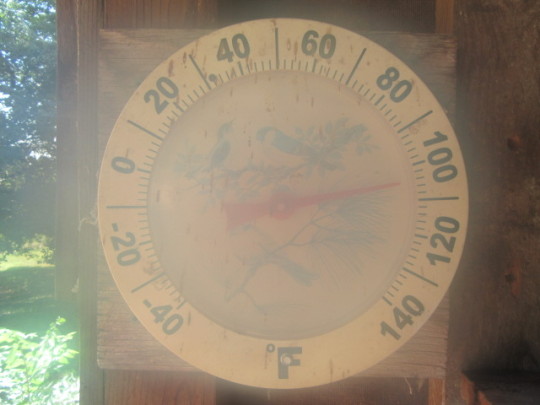
View On WordPress
#Ambrosia bidentata (Lanceleaf Ragweed)#Asclepias hirtella (Prairie/Tall Green Milkweed)#Asclepias syriaca (Common Milkweed)#Bidens aristosa (Tickseed Sunflower or Bearded Beggarticks)#Datura stramonium (Jimson Weed)#Elephantopus carolinianus (Leafy Elephant&039;s Foot)#Erechtites hieraciifolius (Fireweed/Pilewort)#Erigeron annuus (Annual or Daisy Fleabane)#Etc.)#Eupatorium serotinum (Late Boneset)#Impatiens capensis (Jewelweed)#Lespedeza cuneata (Chinese Bushclover)#Persicaria hydropiper (Water Pepper)#Persicaria pensylvanica (Pinkweed)#Phytolacca americana (American Pokeweed)#roton capitatus (Hogwort/Woolly Croton/Goatweed)#Rudbeckia hirta (Black-Eyed Susan)#Sida spinosa (Prickly Fanpetals)#Solanum sarrachoides (Hairy Nightshade)#Solidago sp. (Goldenrod)#Symphyotrichum lateriflorum (Calico Aster)#Tridens flavus (Purpletop#Tripsacum dactyloides (Eastern Gamagrass)#Verbesina virginica (White Crownbeard/Frostweed)#Vernonia missurica (Missouri Ironweed)
0 notes
Text


Oleander Aphid (Aphis nerii) feeding on common milkweed (Asclepias syriaca)
158 notes
·
View notes
Photo

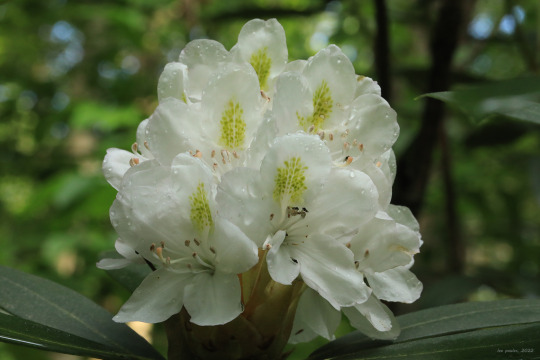
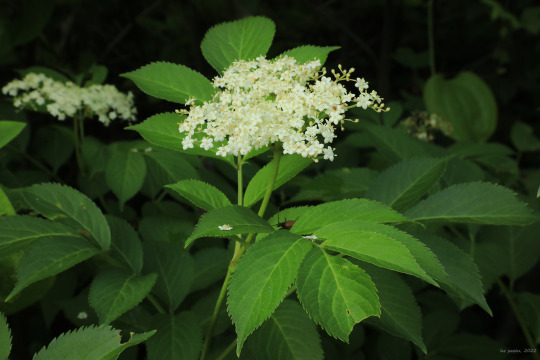

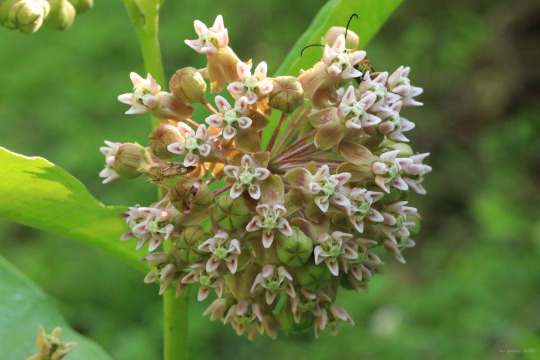





Above are a few photos from a late afternoon hike in the Cheat River Canyon, just after a line of heavy thunderstorms moved through the area. The storms were still brewing at the southern end of the canyon near Albright when I reached the overlook area. Great rhododendron (Rhododendron maximum) is starting to bloom in the canyon, but the real show is probably a week away. Milkweed is also coming on strong, with three varieties growing in the open fields and clearings around the canyon - poke milkweed (Asclepias exaltata), common milkweed (A. syriaca), and butterfly milkweed (A. tuberosa). I once heard milkweed described as a “mega-supermarket for insects”. It’s true. If you want a good starter course on the insects native to your region, then cozy up to the nearest milkweed plant in bloom with an insect field guide in hand.
From top: great rhododendron, also known as great laurel and rosebay rhododendron; American black elderberry, also known a American black elder (Sambucus canadensis), whose purple-blue berries will soon be used by locals to make wine, jam, jellies, and pies; common milkweed, which draws insects, including the banded longhorn beetle (Typocerus velutinus), in droves; butterfly milkweed, also known as butterfly weed; poke milkweed; eastern teaberry (Gaultheria procumbens), whose edible berries and leaves are used to flavor everything from tea to ice cream; and the adorable shinleaf (Pyrola elliptica), also known as waxflower, a shade-tolerant perennial of moist woods.
#appalachia#vandalia#west virginia#summer#flora#wildflowers#insects#cheat river canyon#cheat canyon#chestnut ridge#snake hill wildlife management area#rhododendron maximum#great rhododendron#great laurel#rosebay rhododendron#sambucus canadensis#american black elderberry#american black elder#asclepias syriaca#common milkweed#typocerus velutinus#banded longhorn beetle#asclepias tuberosa#butterfly milkweed#butterfly weed#asclepias exaltata#poke milkweed#gaultheria procumbens#eastern teaberry#pyrola elliptica
100 notes
·
View notes
Text
Collecting Milkweed Seeds - All Facts, All Seeds, No Fluff
(OK but please also consider I'm not an ~expert~ I'm not a ~scholar~ I'm just a nerd on Tumblr who really likes milkweed and wanted to make a fun lil post about it)
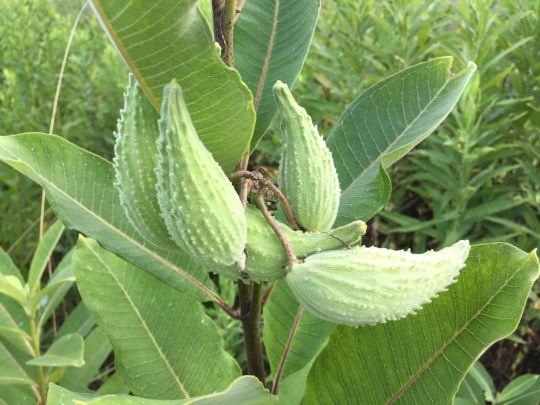
[Image ID: a green, leafy common milkweed plant (Asclepias syriaca) with five large, ovalish and bumpy green seed pods. The seed pods are currently unopened.]
It’s fall, which means if you haven’t seen them already, now’s the time that milkweed plants will start producing seed pods! (Well, technically, they’re called follicles, but fuck it they’re seed pods). Each pod has dozens of seeds inside, some species can even have up to 200 seeds, so even collecting just a few can be a good way to boost your pollinator gardening efforts big time! What you do with them then is up to you--adding life to your backyard garden, sharing with friends, making seed bombs--but first you’ve gotta collect them.
The first thing you want to do is identify your milkweed plants--in an ideal world, you’d be able to tell precisely what kind of milkweed you’re collecting from (so you can know precisely what growing conditions that species prefers.) But when they’re dying back, forming pods, and releasing their seeds, it can be hard to tell. It helps to visit sites early, to know what milkweeds are there, and while you’re there you might even find some forming pods.
It can be helpful to band off the pods early! This will keep the seeds from escaping, so you can come back later and collect them! I would only do this for a couple of pods--each pod has a lot of seed in it, so only taking one or two from each plant should still net you plenty of rewards! When I’m doing this in my backyard, I tend to use rubber bands--the size of rubber band you’ll need varies depending on the species. I’ve also seen people use the lacy-looking jewelry bags to a similar effect--if the pod splits open, all the seeds get trapped in the bag!


[Image ID: the first image is of appears to be swamp milkweed (Asclepias incarnata) with about fifteen long, green, smooth and pointed seed pods. Most of the pods have small black rubber bands wrapped around the midsections. The second image is of what appears to be common milkweed (Asclepias syriaca) with two large, ovalish and bumpy green seed pods. A white fine mesh bag has been tied over the pods.]
For people who want to get seeds from unopened pods, you have to be very careful not to force open a pod that isn’t ready--otherwise, the seeds inside won’t fully develop. How do you tell if a pod is ripe? There’s a seam in each pod, and it should open fairly easily with minimal pressure if it’s basically ready. If you’re basically prying it open, you’re too early. The seeds inside should be a nice dark color, and be plump in the middle--if they’re creamy colored or light orange, you’re too early. There may be some undeveloped seeds in each pod (I am talking maybe 1 to 3 here), but if the majority of them are ready, you’re good to go!

[Image ID: a tropical milkweed (Asclepias curassavica) seed pod that has been opened at the seam, revealing dark brown seeds and lots of creamy white floss. Four seeds are floating away from the pod on fluffy white comas. The pod is being held between a white person's fingers.]
I’ve also seen people who go late late late into the season, after most of the pods have already fully split off and released their seeds. Some of the seeds occasionally stay in the pod, so they’ll take the leftovers that didn’t get scattered after winter passes. That’s a fair strategy! I prefer to get mine way early on, so I can get a clear ID of what kind of milkweed it is (some will flower and produce pods at the same time), but if you already got an ID early in the season and then come back later this can also work! But…

[Image ID: several dried brown seed pods have opened fully, releasing a cloud of milkweed floss with seeds attached. Some seeds are still in the pods, but many are primed to float away.]
There is, however, one thing that tends to be a bit annoying about collecting milkweed seeds--and that’s the fluff. These fluffy white bits attached to the seed--called comas--function similarly to the iconic fluffy dandelion seed. A milkweed seed’s coma allows it to float through the air and on the water until it (hypothetically) reaches bare soil or an otherwise suitable start to settle down and germinate. If you’re collecting the seeds for later use, though, that same coma can mean your milkweed seeds are traveling through the air and away from where you’re collecting them, or all over your apartment once you get them home. Removing the comas by hand is an option, but tedious, and still leads to a nice pile of fluffy that will get airborne at the first gust of wind. At the end of the day, for many people trying to collect milkweed seeds, the coma is just an annoying part they dread.
Fortunately, there are plenty of ways to collect milkweed seeds without having to deal with the comas long-term!

[Image ID: A single brown milkweed seed floating on a comparatively huge mess of white fibers.]
Method 1
So this is my favorite method because it's honestly one of the simplest and easiest once you get used to it. You open the pod, grip the top part of the middle ‘pith’ section tight, and gently scrape off the seeds into a bowl or bag. This leaves you with almost no fluff in your collection bin, and you can then toss the middle fluffy part--or I’ve heard of people collecting milkweed fluff for spinning! Most of the videos I’ve seen on it use common milkweed or other large milkweed pods as an example--however, I’ve successfully done this with smaller milkweed pods like A. curassavica as well.
youtube
Method 2
This method is one I’ve used in the past. Take the seeds and fluff and put them into a bag (paper or plastic) and add a coin or two. Shake the bag around--a lot. The coin will dislodge the comas from the seeds. The seeds will then drop to the bottom of the container, and the fluff will float around on the top. I’ve also seen this with buckets and blocks, like in the video below!
Method 3
I’ve seen a handful of people discuss burning the floss of the seeds! Apparently the seeds themselves aren’t damaged badly by the fire, though honestly this is a method that I am simply too anxious to try myself.
youtube
Method 4
This was a method I found while I was looking for other methods people have done. Apparently, you can just roll the pod between your hands and it’ll work to dislodge the seeds? I may have to try it next time!
youtube
Hopefully this advice is helpful for you all! I know collecting seeds was a hassle for me before I learned my favorite method. If I had a nickel for every time I got yelled at for releasing milkweed fluff into the house...
If you've got a method that I haven't heard about yet, let me know!! I'm always down to learn more about milkweed, and it can also help someone else down the line!
#milkweed#asclepias#seed saving#seed collecting#pollinator garden#outdoor gardening#gardening#flowers#ani rambles#out of queue#i think this was my first time doing image descriptions??? if they suck ass let me know and I'll Make Adjustments As Recommended#i've seen people talk about spinning the milkweed floss??? but I saw online that it was too brittle to be spun????#but either way if you wanna save the floss and do Stuff with it go for it#did you know. or actually this is me functioning from memory.#but if I recall correctly I believe in either the WWI era or the WWII era#people would pay kids to go around fields collecting milkweed seed pods and pay them by the pound#and then they'd take the floss and use it to fill life jackets for soldiers?#i think this was less of a 'extorted child labor sweat shop' deal and more of a like#'hey kids wanna earn some cash and also be a Patriotic Citizen? go find some seed pods and we'll give you money'#which i guess many people WOULD consider an Extorted Child Labor kinda deal but like#idk seems like a chill deal to me#anyways hope you guys like this post#Youtube
126 notes
·
View notes
Text

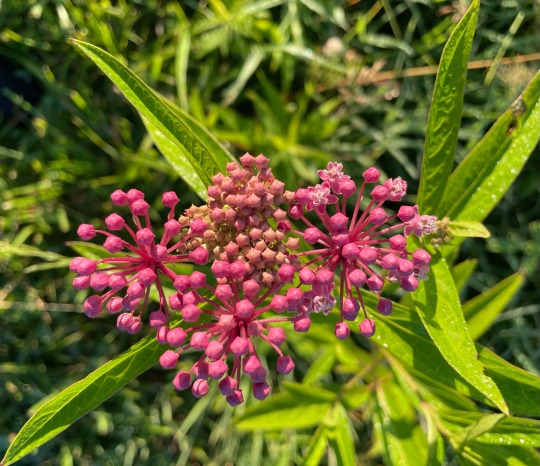
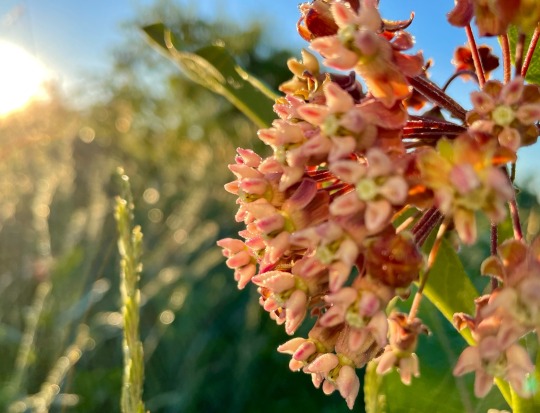
For the Asclepias fans—it’s milkweed season.
Butterfly weed, Asclepias tuberosa; swamp milkweed, Asclepias incarnata; common milkweed, Asclepias syriaca.
338 notes
·
View notes
Text
MIDWEST/EAST US: I have the following native flower (and one grass) seeds available for cost of shipping, all harvested from either my garden or from nearby parks in small amounts. if you're interested please kofi me here and shoot me a message with your address and what you'd like! amount/availability may vary but I would like to share as much as possible.
before requesting please make sure the seeds you want are native to your state! prairie moon has range maps for many of the species here; otherwise a quick search of the scientific name should let you know.
seeds I have:
-Cup plant (silphium perfoliatum)
-Common milkweed (asclepias syriaca)
-Swamp milkweed (asclepias incarnata)
-Honeyvine milkweed (cynanchum laeve)
-Maypop (passiflora incarnata)
-Bee balm (monarda fistulosa)
-Foxglove beardtongue (penstemon digitalis)
-Purple coneflower (echinacea purpurea)
-Missouri coneflower (rudbeckia missouriensis)
-Showy sunflower (helianthus pauciflorus)
-Cliff goldenrod (solidago drummondii)
-Meadow blazing star (liatris ligulistylis)
-Common evening primrose (oenothera biennis)
-Blue sage (salvia azurea)
-Little bluestem (schizachyrium scoparium)
-Blue mistflower (conoclinium coelestinum)
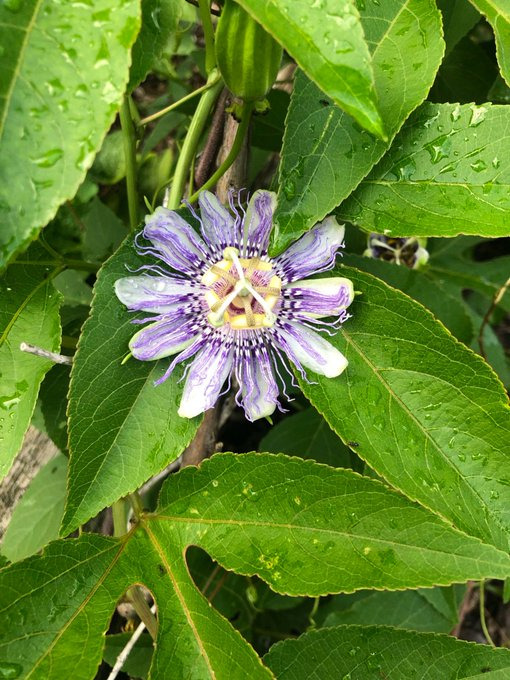

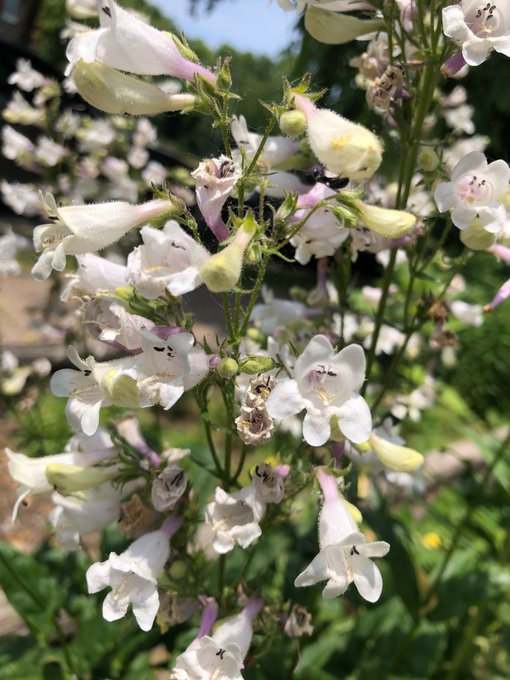

#plants#gardening#native plant gardening#native plants#flowers#prairie plants#free#maypop#sunflower#milkweed#insect gardening#bigeelsplantposting
12 notes
·
View notes